Our fearless leader, Eric Hagstette, is this month’s cover feature in Portland Real Producers Magazine. Click the magazine image below to see the full article and learn what motivates this great guy.

Here’s the transcript of the article:
Eric Hagstette’s social conscience is one of his strongest driving forces. Owner and principal broker of Inhabit Real Estate, Eric is this month’s Top Producer.
Starting his career in business to business sales for a Fortune 300 New York-based company, Eric transitioned into real estate in 2005. He looks back on his time in Corporate America with gratitude and appreciation for teaching him the fundamentals of sales, marketing, and most important, follow-up. “This is where I also learned that excuses are…just that,” Eric explains.
As a longtime Portlander, Eric is passionate about our city and how it is being affected by the pandemic, wildfires and smoke, protests, riots, and the current political divide. When asked how the wild ride of 2020 has affected his business, he told us, “Big question. The big picture crises we’re facing are much bigger than our work. They are more important than selling real estate, and we’re right in the heart of all of it. ‘Home’ has never been more important and we are in the business of ‘home.’ I feel torn between all of the hardships resulting from COVID-19 and the abundance that real estate is providing as a result of these unprecedented times. Transactionally speaking, we are in the right place at the right time… there is no shortage of business. Portland has certainly seen its day in the news through all of this and the long-term effect on our business is hard to predict. One of the silver linings of all of these things, from my observation, is a galvanization of the brokerage community. From COVID-19 to wildfires (and everything in between), I’ve seen brokers work together like never before. Kudos to all of you. Thank you.”
Real estate brings with it many rewards. For Eric, one of the biggest rewards comes in the form of the various relationships he has been able to foster over the years. “Hands down it’s all about the people. Not just my clients but my colleagues, my team, my mentors, my co-op agents, my vendors, our neighbors.”
Eric also finds fulfillment in owning and managing Inhabit Real Estate. “Operationally, managing a residential real estate brokerage while simultaneously running my personal sales business allows me to wear all the hats. From coaching my agents to prospecting for business, writing copy for ads, working on budgets and business plans, and everything in between. And who doesn’t love houses, photography, interior design, architecture, marketing, continuing education, networking, and all the fun stuff? Of course, our job also comes with all the tough stuff like unpredictable market conditions, challenging clients, paying taxes, delivering bad news, the emotional roller coaster of real estate, and the woes of being self-employed.
Luckily, my attention span helps me thrive in this multi-tasking, fast-paced, up-and-down market. I honestly love all of it.”
Finding passion in all of the possibilities that real estate affords, motivates Eric on a daily basis. “I have always been passionate about the unlimited possibilities that a real estate license affords us. With hard work and a simple plan, the sky’s the limit for REALTORS®. Playing such a pivotal role in times of transition for my clients is a huge responsibility. I have always held the importance of this piece with passion and drive. As a brokerage owner, I am passionate about teaching, training, and watching my brokers achieve their goals and dreams through real estate.”
Eric’s biggest reward in life is his family. Due to the pandemic, Eric has spent more time at home with his family than at any other time in his professional career and for him, this has been a huge blessing. “My family is the driving force behind my success. Not only do they motivate me every day but, as many of you know, to support the life of a REALTOR® requires a special family support unit. My family rides the roller coaster right by my side and they provide a safe haven to escape to. I’ve been married to my wife Kim for 21 years. I thank my lucky stars every day that our paths crossed. Not only is she my life partner, but she’s also my business partner and co-owner of Inhabit Real Estate, all the while holding down the fort at home and running her award-winning interior design business. We have two amazing teenagers who keep me in check and make sure I’m as ‘woke’ as possible for an almost-50-year- old dad. I learn a ton from my kids. I have so much hope for the younger generations who know more about equality, acceptance, and non-judgment. We can all take a note from the kids of today and appreciate their fire and passion, their resilience and brilliance, and their endurance through these unusual times. And, by way of osmosis and exposure (to me), my family knows more about oil tanks, sewer lines, multiple offers, and even the value of off-street parking.”
Along with the rewards of real estate comes the challenges. This year has been trying for everyone. The devastation from wildfires and the loss of life and business upheaval caused by the pandemic is horrific. We asked Eric what new challenges he has been facing and navigating since the pandemic hit and he told us, “Wildfires, extremely hazardous air quality, political unrest, social outcry and one of the most significant Presidential elections in history, all the while keeping pace with one of the busiest markets I have experienced in 15+ years of selling real estate. The erosion of affordable housing in Portland is accelerating at light speed and this is an indirect challenge that we cannot turn a blind eye to. The pandemic, wildfires, and the election will be in our rear-view mirror in the not-too-distant future, but not addressing the homeless crisis will likely have the greatest future impact on Portland livability and the bottom line of our business.”
Eric has a competitive side that he feeds with his love of cycling and bike racing. He has loved bikes since he was a child and has been racing for the past 10 years. “I’m a die-hard cyclist and bike racer. I love carbon, clicky pedals, training, going fast, and Lycra (yep, I said it…I love Lycra). Cycling keeps my body fit and my mind sane. It feeds my competitive spirit and, unintentionally, is a huge part of my networking sphere. My relationship with my teammates and fellow cycling friends is based on trust and trust is the foundation of our profession so these things go hand in hand.”
The Hagstette family are water enthusiasts. If there is water, you will find them nearby or right in it! “My family loves the water. We have a floating home and spend the summer paddleboarding, kayaking, floating, boating, swimming, and fishing.”
As you would expect, with his strong social conscience Eric does not just think about the changes that need to take place. He helps facilitate the change. Annually, Inhabit Real Estate picks a charitable cause that focuses on alleviating homelessness, “We have thrown hammers for Habitat for Humanity, organized holiday toy drives, and collected much-needed essentials for homeless children and families. As a family, our focus is on Transition Projects. Every month for the last few years, we have prepared and served dinner and lunches at multiple locations that are focused on men, women, and families transitioning out of homelessness.” Eric also aids the community by coaching youth swimming and sponsoring free junior bike racing at The Portland Trophy Cup Cyclocross series.
In closing, we asked Eric if he would like to communicate anything additional to the readers of Portland Real Producers magazine. Without hesitation, he responded, “As a longtime Portlander, I’ve always held a special place in my heart for this amazing city. I am sure I am not alone when I say that Portland is at a very important crossroads. ‘Home’ is our business and we’re paid to sell the ‘Portland experience.’ ‘Home’ doesn’t just apply to our qualified buyers and sellers. It applies to all people occupying the space called Portland including those with the means to buy or rent real estate and those that are sleeping outside under tarps. We must realize that even though we only serve a portion of Portland residents, they all make up the community, whether they have a house or not. It is our duty as ‘real producers’ and leaders in our industry to help Portland through these growing pains. While the country seems to grow in divide, it is very important for us to come together to put Portland back on track to be the darling of the Northwest. As we buzz through town enjoying the fruits of this market, I encourage you to think more critically about the ‘in your face’ issues that are easy to turn a blind eye to: mental illness, drug addiction, systemic racism, climate change, and environmental destruction and affordable housing. Raise your voice and vote. We must demand more from our local leadership and lean hard on them to properly address these big issues which not only affect our profession but our lives as well.


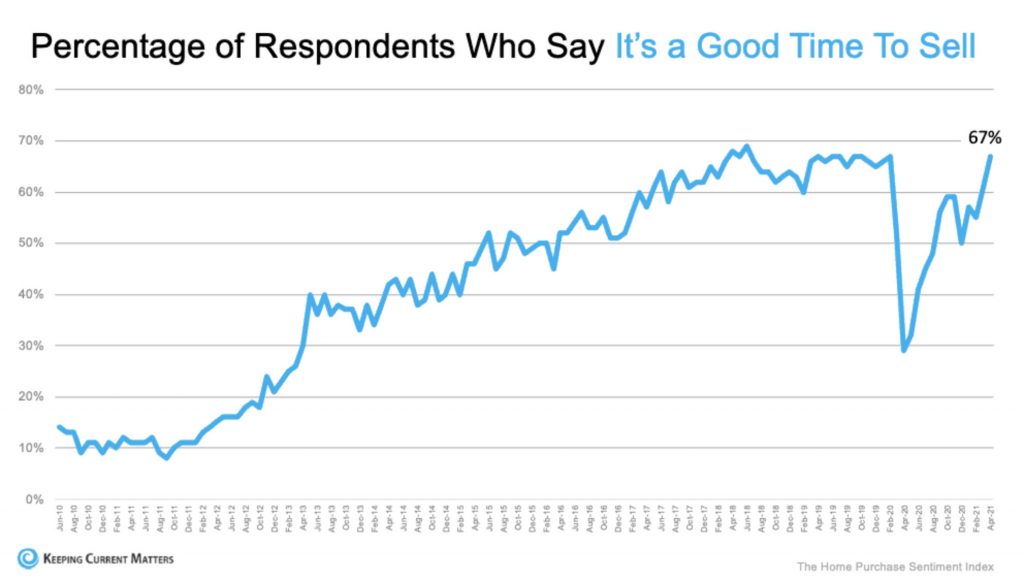



 Growing up in Santa Fe, New Mexico and Tulsa, Oklahoma, I developed an affinity for the seasons. Delightfully, here in Portland, we get a wonderful taste of all four seasons, from the *generous* rainy season to some gorgeous spring days, a handful of summer scorchers and even some blustery snow days. The variety is as welcomed as it is vital, to my mental state anyway. Even the recent ice storm was something to behold. While entertaining in its drama, it was certainly disconcerting for many of us. And yet another reminder of how dear it is …our place called home.
Growing up in Santa Fe, New Mexico and Tulsa, Oklahoma, I developed an affinity for the seasons. Delightfully, here in Portland, we get a wonderful taste of all four seasons, from the *generous* rainy season to some gorgeous spring days, a handful of summer scorchers and even some blustery snow days. The variety is as welcomed as it is vital, to my mental state anyway. Even the recent ice storm was something to behold. While entertaining in its drama, it was certainly disconcerting for many of us. And yet another reminder of how dear it is …our place called home.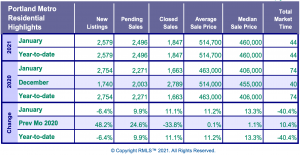



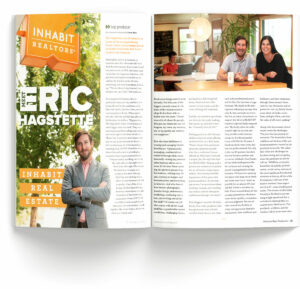

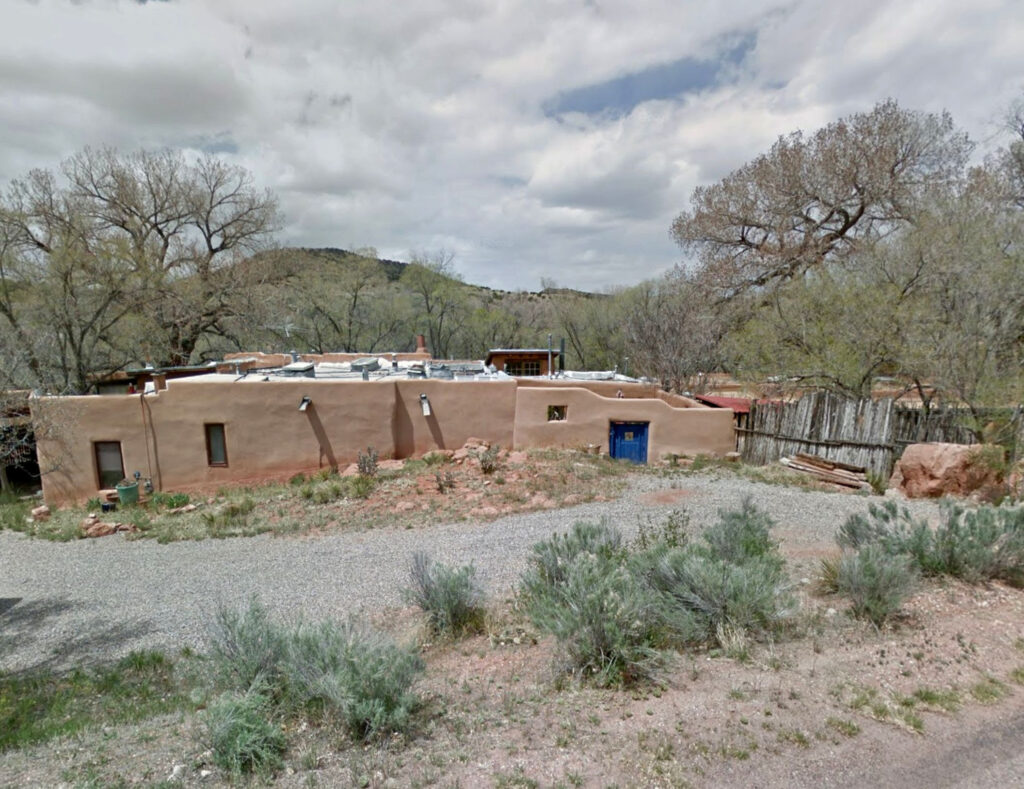







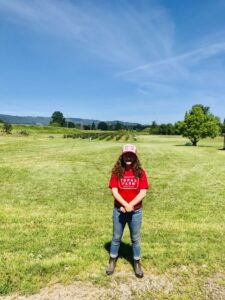

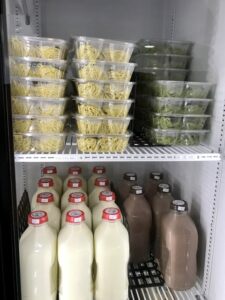




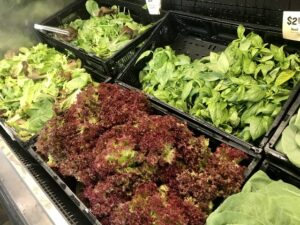

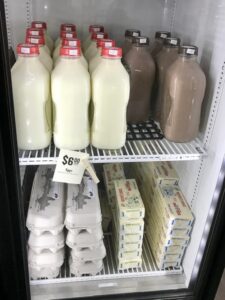
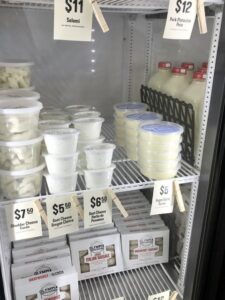
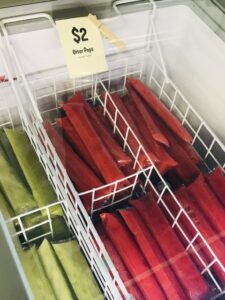

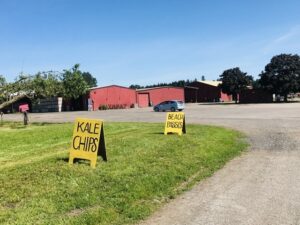


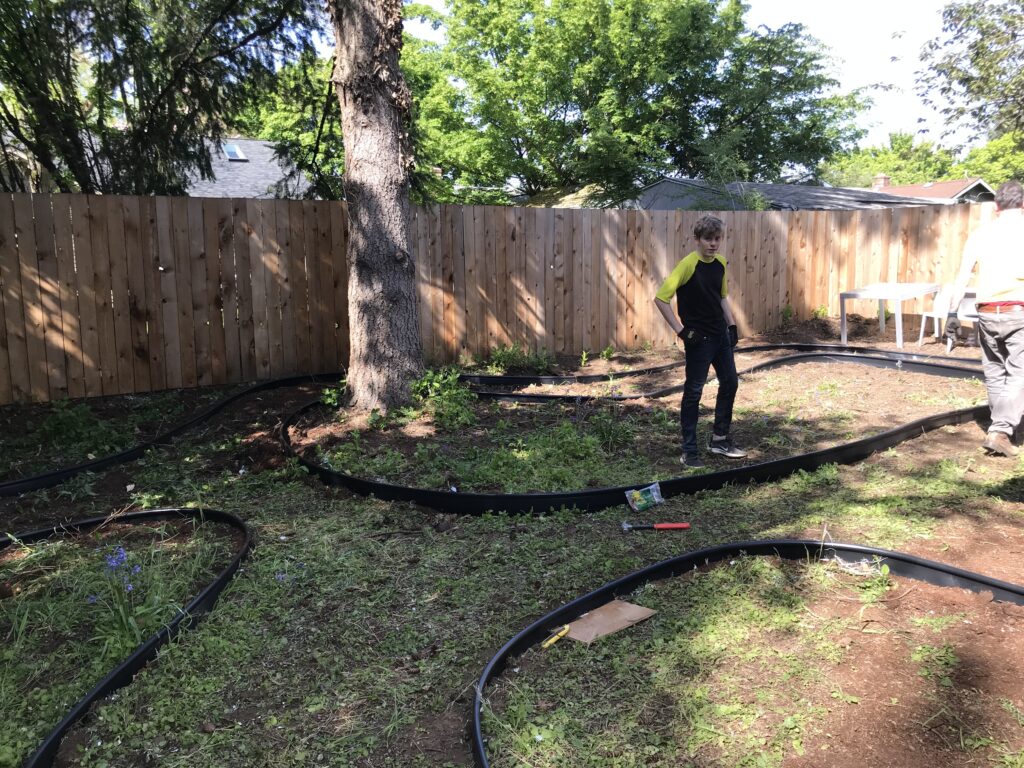

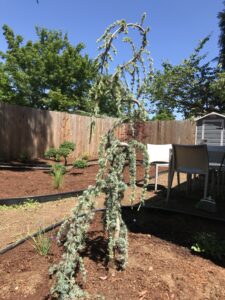 Now it was time for some of the planting fun! We chose a few beauties to be focal points in the garden, including a Japanese maple, weeping blue cedar, bonsai and a pink hydrangea and rhododendron. Additionally, we planted a handful of ferns and grasses in groups of 3. We are fans of not over planting and giving everything room to grow. These were purchased from multiple Eastside businesses including
Now it was time for some of the planting fun! We chose a few beauties to be focal points in the garden, including a Japanese maple, weeping blue cedar, bonsai and a pink hydrangea and rhododendron. Additionally, we planted a handful of ferns and grasses in groups of 3. We are fans of not over planting and giving everything room to grow. These were purchased from multiple Eastside businesses including 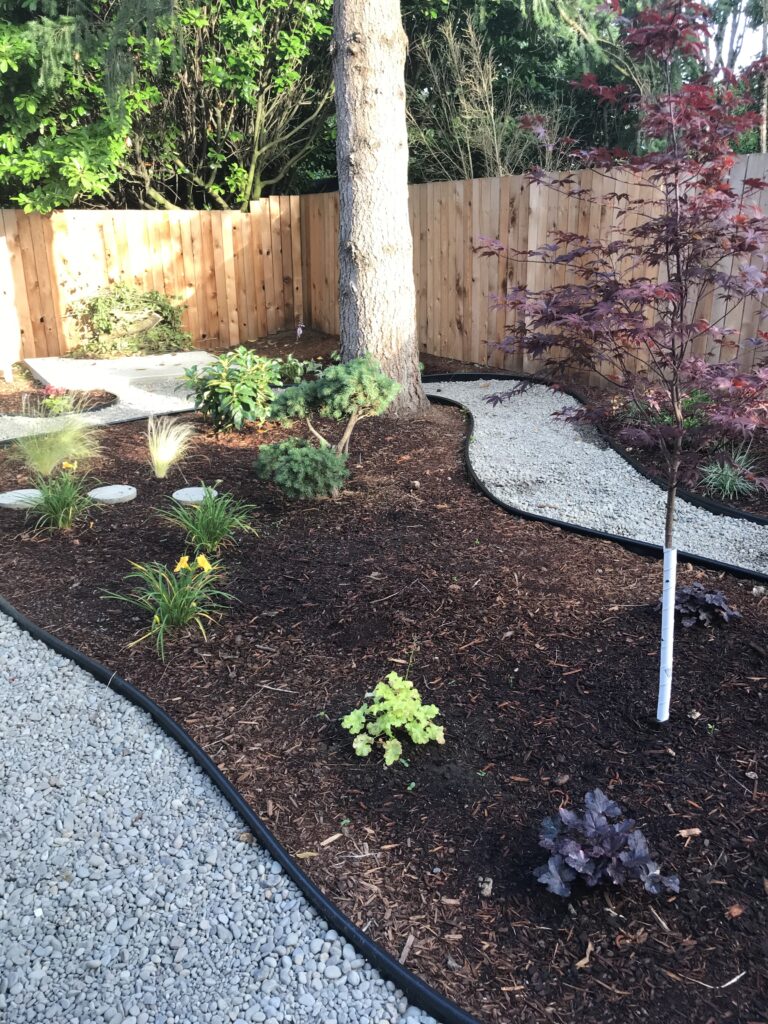 With the plants in place, it was time to purchase mulch and rock. Lucky for us, fabulous
With the plants in place, it was time to purchase mulch and rock. Lucky for us, fabulous 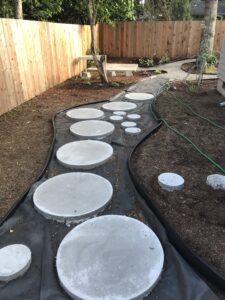 One of our final tasks on the project was to produce our own concrete circles in the path. My partner had a bit of experience working with concrete from his previous house, and he was excited to put his cement mixer to use again. To create the large circles, he constructed molds out of fiberboard and we placed them in the empty path. Then the concrete was mixed and poured in multiple batches. We made the small circles off to the side and simply placed them in the path after they were dry, and then finished filling in the river rock.
One of our final tasks on the project was to produce our own concrete circles in the path. My partner had a bit of experience working with concrete from his previous house, and he was excited to put his cement mixer to use again. To create the large circles, he constructed molds out of fiberboard and we placed them in the empty path. Then the concrete was mixed and poured in multiple batches. We made the small circles off to the side and simply placed them in the path after they were dry, and then finished filling in the river rock. 


 In-person tours are still an option in many cases when necessary, but with precautions we take very seriously. We recommend live video tours for anyone that has cold or flu symptoms or concerned about a possible COVID-19 exposure. This goes for clients, as well as, agents. Our agents are following the recommended 6 ft of social distancing and strict hand-washing and disinfecting policies. Our agents provide our COVID-19 Safe Showing policies to clients for review prior to visiting any property in-person so you can make the best decision for your health and safety.
In-person tours are still an option in many cases when necessary, but with precautions we take very seriously. We recommend live video tours for anyone that has cold or flu symptoms or concerned about a possible COVID-19 exposure. This goes for clients, as well as, agents. Our agents are following the recommended 6 ft of social distancing and strict hand-washing and disinfecting policies. Our agents provide our COVID-19 Safe Showing policies to clients for review prior to visiting any property in-person so you can make the best decision for your health and safety.
 For those of us invested in the stock market, we’ve all been wondering if the historic run of this bull market was ever going to end. No one, however, could have predicted the coronavirus or imagine its global impact. The next few months are still unwritten and as we brace ourselves for how far reaching the effects will be. It’s unsettling for everyone. The stock market volatility is reminiscent of 2008, but the cause is totally different, and it will have different effects. A recent New York Times article titled
For those of us invested in the stock market, we’ve all been wondering if the historic run of this bull market was ever going to end. No one, however, could have predicted the coronavirus or imagine its global impact. The next few months are still unwritten and as we brace ourselves for how far reaching the effects will be. It’s unsettling for everyone. The stock market volatility is reminiscent of 2008, but the cause is totally different, and it will have different effects. A recent New York Times article titled  The news around COVID-19 feels surreal right now with everything seemingly in a holding pattern, but the root cause of what’s driving Portland’s housing demand will not be affected in the long run. Portland is one of the strongest real estate markets in the country. It’s during times of crisis that people take the time to reflect on what’s really important. The certainty of having a safe place to call home tops most lists. Also, the push to create a stay-at-home economy makes where you live more important than ever. Companies may realize that having their employees work from home has some financial benefits. This could very well make a shift to more people getting to decide where they want to live. Lifestyle is a major driver to Portland’s growth. Are we now poised more than ever to see accelerated growth? I don’t have a crystal ball, but I would be willing to make a bet that the net effect of what’s happening right now will make people pause and consider what’s really important in life.
The news around COVID-19 feels surreal right now with everything seemingly in a holding pattern, but the root cause of what’s driving Portland’s housing demand will not be affected in the long run. Portland is one of the strongest real estate markets in the country. It’s during times of crisis that people take the time to reflect on what’s really important. The certainty of having a safe place to call home tops most lists. Also, the push to create a stay-at-home economy makes where you live more important than ever. Companies may realize that having their employees work from home has some financial benefits. This could very well make a shift to more people getting to decide where they want to live. Lifestyle is a major driver to Portland’s growth. Are we now poised more than ever to see accelerated growth? I don’t have a crystal ball, but I would be willing to make a bet that the net effect of what’s happening right now will make people pause and consider what’s really important in life.


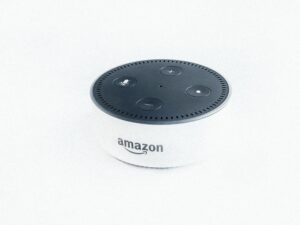


 And just like that, it’s February 2020. If someone asked you when you were a kid what you thought 2020 would look like, did you picture this? I visualized space travel, robots, flying cars, lasers and futuristic stuff…not this everyday adulty life gig.
And just like that, it’s February 2020. If someone asked you when you were a kid what you thought 2020 would look like, did you picture this? I visualized space travel, robots, flying cars, lasers and futuristic stuff…not this everyday adulty life gig. prices” part though. Affordability is a major concern. The chasm between the cost of Portland real estate and our median household income seems to be growing. Jobs are coming but wages haven’t caught up and the cost of living keeps climbing. This pushes buyers to outlier markets (Vancouver, Milwaukie, Beaverton, Oregon City, etc). For the urbanites that don’t want to pay for the high priced houses but want to stay in town, they’ll drive demand in the ‘attached’ market (townhouses/condos) which had a slow 2019. This will stabilize pricing in the attached market. Properly priced, well-presented, detached houses from the $200k to $1m range will continue to fly off the shelf. The $1m-$1.5m market is a ‘move up’ market for many wanting to upgrade from their existing home . This market presents opportunities for buyers to make a great purchase; however, tapping their “trapped equity” from their existing home in order to make this purchase can present challenges (certainly not insurmountable but can be daunting to the client). In surprising fashion, Portland’s upper end market ($1.5m +) is moving at a pace you may find interesting (fast). Of course, these properties need to deliver the full package to fetch the price, but this market segment seems very confident in Portland as a place to make these big purchases. I find these big numbers surprising as I clearly remember how freaked out I was when I bought my first house in Mt. Tabor for $185k. However, like many other places, we are bursting at the seams. The numbers for incoming population growth are staggering which in real estate economics translates to demand. Portland is in high demand which has all but diminished the lower end of the market and made it feel normal to buy and sell very expensive real estate.
prices” part though. Affordability is a major concern. The chasm between the cost of Portland real estate and our median household income seems to be growing. Jobs are coming but wages haven’t caught up and the cost of living keeps climbing. This pushes buyers to outlier markets (Vancouver, Milwaukie, Beaverton, Oregon City, etc). For the urbanites that don’t want to pay for the high priced houses but want to stay in town, they’ll drive demand in the ‘attached’ market (townhouses/condos) which had a slow 2019. This will stabilize pricing in the attached market. Properly priced, well-presented, detached houses from the $200k to $1m range will continue to fly off the shelf. The $1m-$1.5m market is a ‘move up’ market for many wanting to upgrade from their existing home . This market presents opportunities for buyers to make a great purchase; however, tapping their “trapped equity” from their existing home in order to make this purchase can present challenges (certainly not insurmountable but can be daunting to the client). In surprising fashion, Portland’s upper end market ($1.5m +) is moving at a pace you may find interesting (fast). Of course, these properties need to deliver the full package to fetch the price, but this market segment seems very confident in Portland as a place to make these big purchases. I find these big numbers surprising as I clearly remember how freaked out I was when I bought my first house in Mt. Tabor for $185k. However, like many other places, we are bursting at the seams. The numbers for incoming population growth are staggering which in real estate economics translates to demand. Portland is in high demand which has all but diminished the lower end of the market and made it feel normal to buy and sell very expensive real estate.  Even though we’re not living in the Jetson-like society that I envisioned as a kid, 2020 is chock full of new and exciting stuff: self-parking, electric cars, virtual reality, and an impressive (and concerning) amount of technology & connectivity. At the push of a button, you can have almost anything you want delivered to your doorstep within hours. Heck, you can push a button and order up a random Realtor to open up a house for you (but how dare you do that!). Real estate is no exception to the expectation of today’s “now society”. As professionals, our response time must be faster, our knowledge deeper and our ability to navigate this market must be sharp and focused. One thing that technology can’t change, is the human factor that is necessary to create happy buyers and happy sellers in real estate transactions. This is our wheelhouse. We embrace today’s disruptions & technology and use them as tools to enhance our clients’ position and experience; however, we feel more strongly than ever that real estate is a people business and we are here to stay.
Even though we’re not living in the Jetson-like society that I envisioned as a kid, 2020 is chock full of new and exciting stuff: self-parking, electric cars, virtual reality, and an impressive (and concerning) amount of technology & connectivity. At the push of a button, you can have almost anything you want delivered to your doorstep within hours. Heck, you can push a button and order up a random Realtor to open up a house for you (but how dare you do that!). Real estate is no exception to the expectation of today’s “now society”. As professionals, our response time must be faster, our knowledge deeper and our ability to navigate this market must be sharp and focused. One thing that technology can’t change, is the human factor that is necessary to create happy buyers and happy sellers in real estate transactions. This is our wheelhouse. We embrace today’s disruptions & technology and use them as tools to enhance our clients’ position and experience; however, we feel more strongly than ever that real estate is a people business and we are here to stay. 


 Another thing that makes it totally Portland is that a lot of times, when someone buys a home there, the people selling the home will pass their decorations along to the new buyers. But like I said, one of the things that makes it so very not like Portland is holy crap, it’s crowded! At least for the second half of December. The cops block off the street to car traffic now, which I guess makes it even more Portland. If you live on Peacock Lane and you have an emergency at 5:30 on a December evening –– like you’ve run out of kombucha or something –– you’re sure as heck not getting in your car to get more. I mean, not like you have to. There’s a Walgreen’s right down at the end of the block where, yes, last time I checked they sell kombucha. There’s also a weed dispensary around the corner which used to be this place called Immortal Piano –– broke my heart when it closed because, with a name like Immortal Piano…
Another thing that makes it totally Portland is that a lot of times, when someone buys a home there, the people selling the home will pass their decorations along to the new buyers. But like I said, one of the things that makes it so very not like Portland is holy crap, it’s crowded! At least for the second half of December. The cops block off the street to car traffic now, which I guess makes it even more Portland. If you live on Peacock Lane and you have an emergency at 5:30 on a December evening –– like you’ve run out of kombucha or something –– you’re sure as heck not getting in your car to get more. I mean, not like you have to. There’s a Walgreen’s right down at the end of the block where, yes, last time I checked they sell kombucha. There’s also a weed dispensary around the corner which used to be this place called Immortal Piano –– broke my heart when it closed because, with a name like Immortal Piano…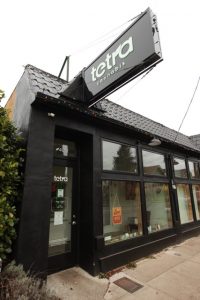
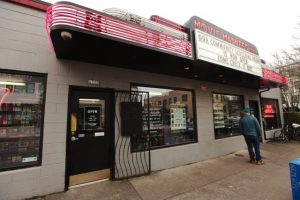 So I know what you’re thinking. You’re thinking, “Well, Brian, that’s all super interesting. Do houses on Peacock Lane cost more than equivalent houses a block or so away?”
So I know what you’re thinking. You’re thinking, “Well, Brian, that’s all super interesting. Do houses on Peacock Lane cost more than equivalent houses a block or so away?”

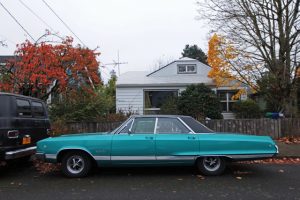
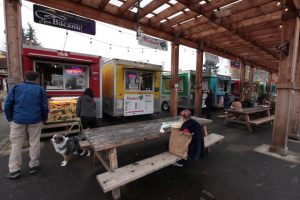
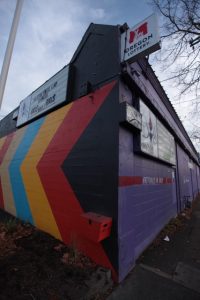
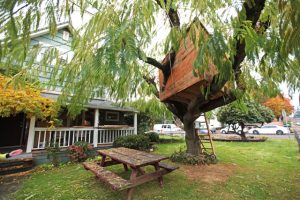
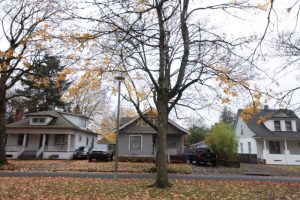
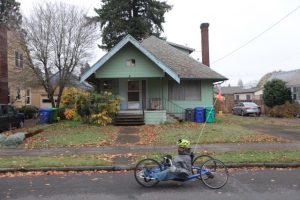 As I mentioned in another post, in Portland we have 20 blocks to a mile so even if you’re out by 82nd, you’re within biking distance of downtown. And it’s a nice ride, too, through Clinton, Ladd’s Addition, and over the Hawthorne bride. You can’t even get lost. Just follow the thousands of other bike commuters making the same trip. It’s a good ride back home. Short enough to do it every day. Strenuous enough that you can justify …you know where I’m going with this …
As I mentioned in another post, in Portland we have 20 blocks to a mile so even if you’re out by 82nd, you’re within biking distance of downtown. And it’s a nice ride, too, through Clinton, Ladd’s Addition, and over the Hawthorne bride. You can’t even get lost. Just follow the thousands of other bike commuters making the same trip. It’s a good ride back home. Short enough to do it every day. Strenuous enough that you can justify …you know where I’m going with this …
 This is the time of year that many of us slow down, spend more time with family and friends, reflect on our year and start setting our intentions for the New Year. The holiday season, for many, prompts a feeling of gratitude. Maybe it’s because we slow down, take time off, reflect on the year as it winds down and what it has meant. But, did you know that the act of feeling and expressing gratitude has extreme benefits for our physical health, psychological well-being and relationships with others? Scientific studies have been going on for decades trying to understand the full benefits of simply expressing gratitude.
This is the time of year that many of us slow down, spend more time with family and friends, reflect on our year and start setting our intentions for the New Year. The holiday season, for many, prompts a feeling of gratitude. Maybe it’s because we slow down, take time off, reflect on the year as it winds down and what it has meant. But, did you know that the act of feeling and expressing gratitude has extreme benefits for our physical health, psychological well-being and relationships with others? Scientific studies have been going on for decades trying to understand the full benefits of simply expressing gratitude.  Research has shown that gratitude helps us celebrate the present and participate more in life. It helps block negative and toxic emotions like envy, resentment and regret that can destroy happiness. Grateful people are more stress resistant and have a higher sense of self-worth.
Research has shown that gratitude helps us celebrate the present and participate more in life. It helps block negative and toxic emotions like envy, resentment and regret that can destroy happiness. Grateful people are more stress resistant and have a higher sense of self-worth.

 Let me start by saying we’re not curing cancer here. I know that. What we do is help people do something they’re going to do anyway.
Let me start by saying we’re not curing cancer here. I know that. What we do is help people do something they’re going to do anyway.
 People, though. People can be happy.
People, though. People can be happy.

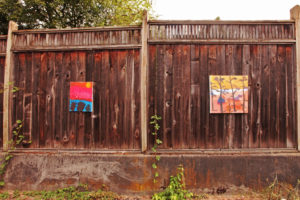
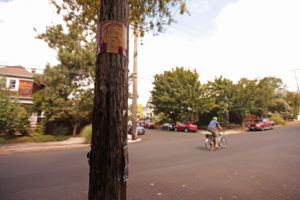

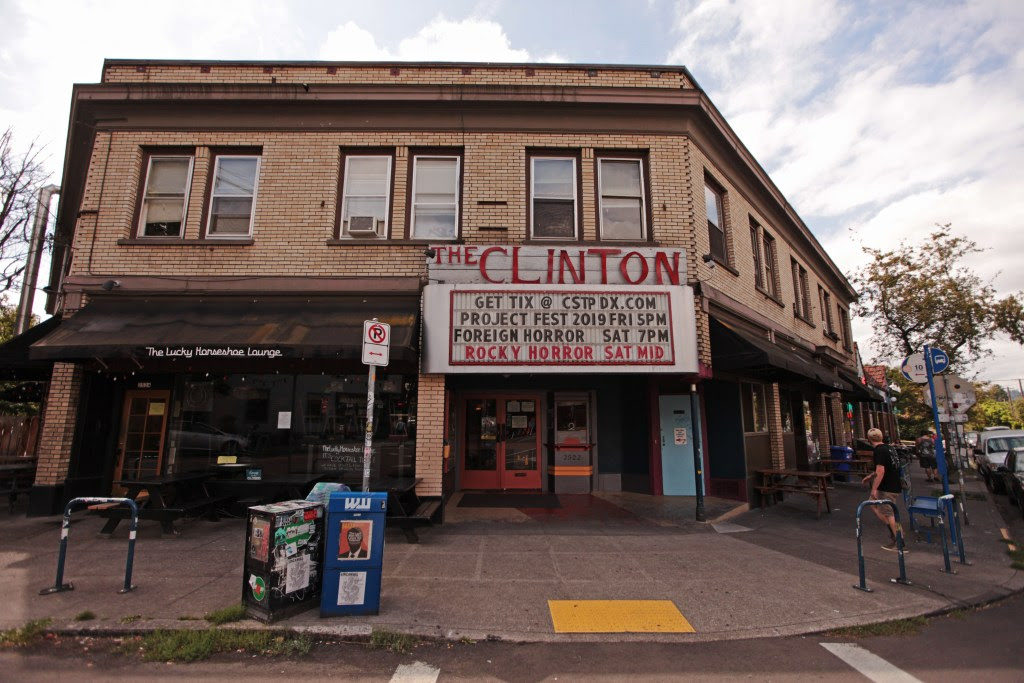
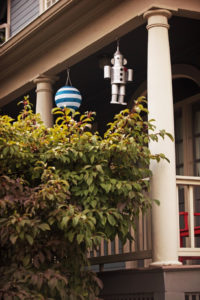 I’ve already gone on about Division (
I’ve already gone on about Division (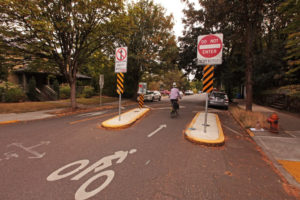
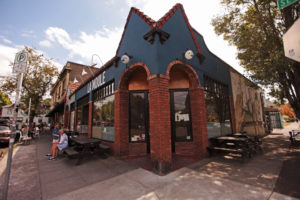
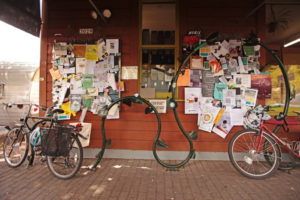 You also have two optometrists, a boutique that sells kid stuff …even two real estate offices.
You also have two optometrists, a boutique that sells kid stuff …even two real estate offices.
 These four simple words “outside of the ordinary”, turns a switch in the brain. It’s freeing, kind of like coloring outside the lines. It’s an opportunity to explore the options of what’s possible and not feel hemmed in by preconceived limits or expectations. I remember my second-grade teacher telling me to color inside the lines; she had no idea what she was saying. Having the courage to be creative and go beyond what’s expected is the goal. How am I going to be unique or extraordinary today? What can I accomplish in my life and career if I actively seek what is outside of the ordinary?
These four simple words “outside of the ordinary”, turns a switch in the brain. It’s freeing, kind of like coloring outside the lines. It’s an opportunity to explore the options of what’s possible and not feel hemmed in by preconceived limits or expectations. I remember my second-grade teacher telling me to color inside the lines; she had no idea what she was saying. Having the courage to be creative and go beyond what’s expected is the goal. How am I going to be unique or extraordinary today? What can I accomplish in my life and career if I actively seek what is outside of the ordinary?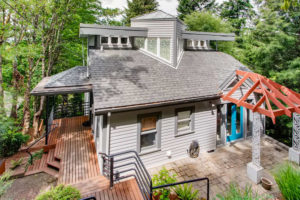 In the world of real estate, brokers have the opportunity to think outside the ordinary daily. Helping people buy and sell real estate is not cut and dry by any stretch. No two deals or clients are alike so having the ability to think outside the box is paramount in providing true value. Personally, I have found the best way to do this is to have an exceptionally organized plan, be proactive, have steadfast balance in your life, an immaculate and positive attitude, the ability to look for solutions when faced with obstacles and last, but not least, a client-centered approach.
In the world of real estate, brokers have the opportunity to think outside the ordinary daily. Helping people buy and sell real estate is not cut and dry by any stretch. No two deals or clients are alike so having the ability to think outside the box is paramount in providing true value. Personally, I have found the best way to do this is to have an exceptionally organized plan, be proactive, have steadfast balance in your life, an immaculate and positive attitude, the ability to look for solutions when faced with obstacles and last, but not least, a client-centered approach.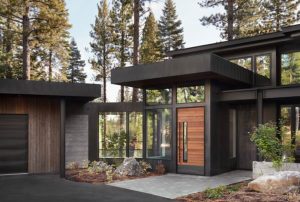 If you are looking for an extraordinary advocate to help you navigate the world of real estate, please reach out. I will take the reins and guide you to your dream home!
If you are looking for an extraordinary advocate to help you navigate the world of real estate, please reach out. I will take the reins and guide you to your dream home!